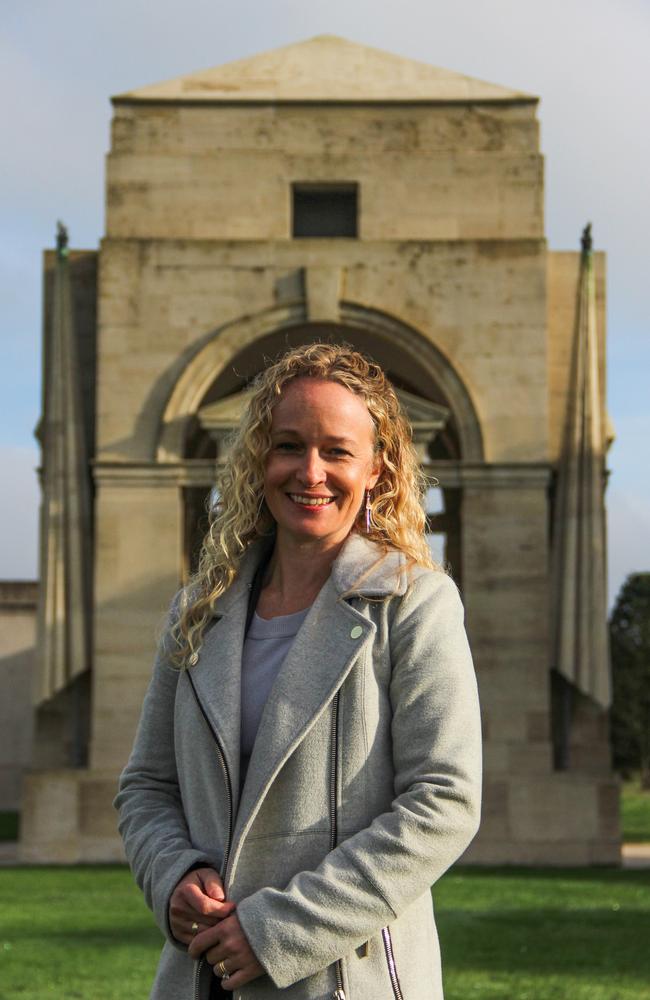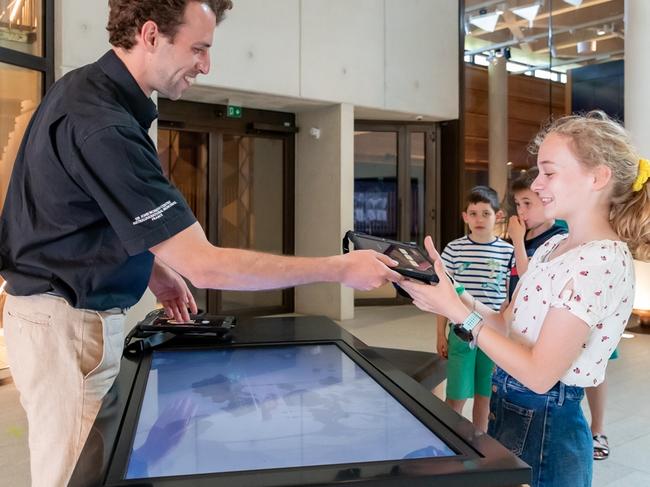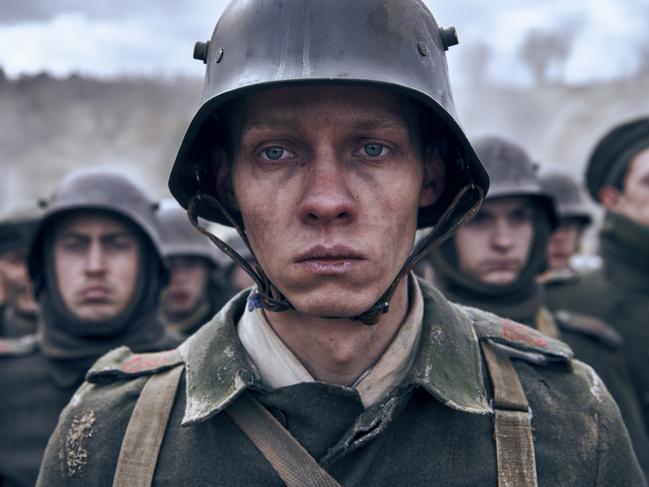Not so quiet on the Western Front: French students and families lead new global interest in Anzac story
An entirely new and very engaged international audience is becoming aware of the Anzacs’ struggles on the Western Front.
National
Don't miss out on the headlines from National. Followed categories will be added to My News.
In a “silver lining” response to Covid, the story of Australians’ struggle and sacrifice on the Western Front is reaching a new international audience previously unaware of the Anzac tradition.
French students, their parents and visitors from other European countries are increasingly visiting key Australian-related WWI sites in France – in particular the hub of the so-called Remembrance Trail, the Sir John Monash Centre.
“Whether it’s a silver lining of Covid, I would definitely say it is a change in the demographic of our visitors,” said Rebecca Doyle, director of the $100m hi-tech museum at the celebrated Anzac battleground of Villers-Bretonneux. “It’s really exciting.”

When international travel fell off a cliff in 2020 – and stayed there for the next two years – the key Australian visitor sector dropped with it. It is only just starting to recover, with much-increased numbers expected by the Department of Veterans’ Affairs for this year’s Anzac Day services at Villers-Bretonneux – “around 1800 to 2000”, said one senior source, with the launch of the Legacy Centenary Torch Relay an added attraction – Gallipoli and other foreign destinations.
In the meantime, after locals kept the flame of remembrance alive – gathering on the road outside the Australian National Memorial on Anzac Day even when there were no official services – Doyle’s team pivoted to attract one group that was still travelling around France: school students.
“We did an outreach campaign to French schools. We knew school trips were happening within France – no longer to places like the UK or Germany – so we leveraged off that.”
The centre works as a destination, she says, because French teachers are looking for outings with multidisciplinary pay-offs, and they can tick off three off at the SJMC: tec, due to its heavy use of multimedia interactivity and a bespoke new youth app; history; and geography. Also, it is free, “which is important for schools”.
While visitor numbers in 2022 overall remained down on pre-Covid levels – no surprise given the numbers of Aussies heading overseas only began recovering in the second half of the year – the change in direction has seen the proportion of school trips triple, with French students now 87 per cent of school-age visitors as compared to 53 per cent in 2019.

“That has seen our French numbers increase enormously,” said Doyle. “We get students from France and beyond who say they had no idea the Australians fought here and are buried here.”
As a bonus, the children then tell their families. “There is a flow-on and we find the parents will come later with the kids,” said Doyle. “That is fabulous to see.”
In addition to visitors from all over France – with those living further away from the northeast WWI area usually the most surprised by what they find – the centre has also seen an uptick in Belgians and Dutch.
It will next target German tourists, as part of a co-ordinated drive with other nearby institutions to market the Somme region’s unique historical and cultural aspects. As a result, while the centre suffered some criticism for failing to meet initial visitor targets after opening in 2018, Doyle says the future is now looking up.

“There’s a lot more energy and excitement for people coming back,” she said.
While Aussies tend to be more interested in the big picture of the entire WWI Anzac story – often following the story of a relative – Doyle believes that for the local visitors “it’s less about strategy, battles and weapons” and more about the personal stories told at the centre.
And all are blown away by the centre’s “secret weapon”: the effects-loaded immersive chamber where a film of the Australians’ battle for the town of Villers-Bretonneux on April 24-25, 1918 – with battle scenes reminiscent of Oscar hit All Quiet On The Western Front – is the main attraction.
“I go in there once a week and (my reaction) still surprises me,” said Doyle. “It packs a punch, it really hits home.”
Originally published as Not so quiet on the Western Front: French students and families lead new global interest in Anzac story


